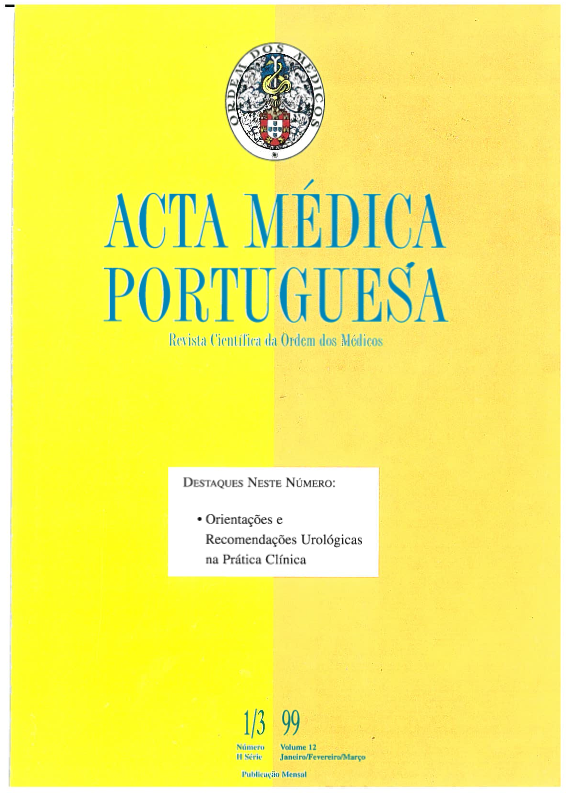Criptorquidia. Implicações clínicas.
DOI:
https://doi.org/10.20344/amp.2112Resumo
This paper briefly reviews the literature on testicular descent and management implications for cryptorchidism. At present, we believe that descent of the testes in humans is a complex event mediated by both hormonal and mechanical factors. There is now good evidence that testicular descent occurs in two morphologic and hormonally distinct phases. Relative "transabdominal migration", which occurs in the 8th and 15th week of gestation, and "inguinoscrotal" migration, which occurs in the 28th and 35th week of gestation. The first phase is controlled by the Mullerian inhibiting factor (MIF), although this remains controversial. The second phase is androgen--dependent and mediated through the release nerve of the neuropeptide calcitonin gene-related peptide from the genitofemoral. Cryptorchidism can therefore result when any one or more of the involved factors malfunction. The therapeutic use of hCG has, however, been disappointing, and its role is confined to helping to distinguish the undescended testis. The demonstration of the pathological changes after one year of age has recently dictated much earlier surgical correction, but long-term follow-up is needed to prove the clinical benefit of this practice.Downloads
Downloads
Como Citar
Edição
Secção
Licença
Todos os artigos publicados na AMP são de acesso aberto e cumprem os requisitos das agências de financiamento ou instituições académicas. Relativamente à utilização por terceiros a AMP rege-se pelos termos da licença Creative Commons ‘Atribuição – Uso Não-Comercial – (CC-BY-NC)’.
É da responsabilidade do autor obter permissão para reproduzir figuras, tabelas, etc., de outras publicações. Após a aceitação de um artigo, os autores serão convidados a preencher uma “Declaração de Responsabilidade Autoral e Partilha de Direitos de Autor “(http://www.actamedicaportuguesa.com/info/AMP-NormasPublicacao.pdf) e a “Declaração de Potenciais Conflitos de Interesse” (http://www.icmje.org/conflicts-of-interest) do ICMJE. Será enviado um e-mail ao autor correspondente, confirmando a receção do manuscrito.
Após a publicação, os autores ficam autorizados a disponibilizar os seus artigos em repositórios das suas instituições de origem, desde que mencionem sempre onde foram publicados e de acordo com a licença Creative Commons









